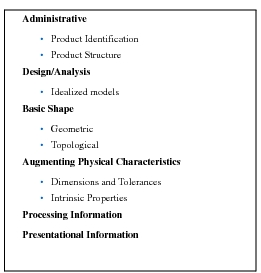XXXXXXXXXXXXXXXXXXXXXXXXXXXXXXXXXXXXXXXXXXXXXXXXXXXXXXXXXXXXXXXXXXXXXXXXXXXXXXXXXXXXXXXXXXXXXXXXXXXXXXXXXXXXXXXXXXXXXXXXXXXXXXXXXXXXXXXXXXXXXXXXXXXXXXXX''"> A.4 IGES File
The Initial Graphics Exchange Specification (IGES) is a mechanism for the digital exchange of database information among present day CAD systems. Its history has seen a rapid development of capability, formalization into an ANSI standard, widespread implementation across the vendor community and substantial commitments for production use. Engineering drawings, 3-D wireframe and surfaced part models, printed wiring product descriptions, finite element mesh descriptions, Constructive Solid Geometry (CSG), B-Rep Solid Geometry, and process instrumentation diagrams are addressed by the IGES standard. This is the level of technology embodied by IGES and by present generation CAD systems.
IGES was developed by the IGES/PDES Organization and is supported by the U.S. Department of Commerce, National Institute of Standards and Technology (NIST) in Gaithersburg, Maryland.
Concepts of Product Definition
The requirements for a common data communication format for product definition can be understood in terms of today’s CAD/CAM environment. Traditionally, engineering drawings and associated documentation are used to communicate product definition data. Commercial interactive graphics systems, originally developed as aids to producing these two-dimensional drawings, are rapidly developing sophisticated three-dimensional solid modeling. In parallel, extensive research work is being conducted in advanced geometric modeling techniques (e.g., parametric representations and solid primitives) and in CAM applications utilizing product definition data in manufacturing (e.g., NC Machining and computer-controlled coordinate measurement). The result is rapid growth of CAD/CAM applications, allowing exchange of product definition data, which usually employ incompatible data representations and formats. In addressing this compatibility, the IGES specification is concerned with needs and capabilities of current and advanced methods of CAD/CAM product definition development.
Product definition data may be categorized by their principal roles in defining a product. An example of such a categorization is presented in
Figure A‑1. The IGES specification specifies communications formats (information structures) for subsets of the product definition:
Figure A‑1 Categories of Product Definition
Concepts of the File Structure
A format to allow the exchange of a product definition between CAD/CAM systems must, as a minimum, support the communication of geometric data, annotation, and organization of the data. The file format defined by the IGES specification treats the product definition as a file of entities. Each entity is represented in an application-independent format, to and from which the native representation of a specific CAD/CAM system can be mapped. The entity representations provided in the specification include forms common the CAD/CAM systems currently available and forms which support the system technologies currently emerging.
The fundamental unit of data in the file is the entity. Entities are categorized as geometry and non-geometry. Geometry entities represent the definition for the physical shape and include points, curves, surfaces, solids, and relations which are collections of similarly structured entities. Non-geometry entities typically serve to enrich the model by providing a viewing perspective in which a planar drawing may be composed and by providing annotation and dimensioning appropriate to the drawing. ! entities further serve to provide specific attributes or characteristics for individual entities or groups of entities and to provide definitions and instances for groupings of entities. The definitions of these groupings may reside in another file. Typical non-geometry entities for drawing definition, annotation, and dimensioning are the view, drawing, general note, witness line, and leader. Typical non-geometry entities for attributes and groupings are the property and the associativity entities.
A file consists of five or six sections: Flag (in the case of the binary or compressed ASCII form), Start, Global, Directory Entry, Parameter Data, and Terminate. A file may include any number of entities of any type as required to represent the product definition. Each entity occurrence consists of a directory entry and a parameter data entry. The directory entry provides an index and includes descriptive attributes about the data. The parameter data provides the specific entity definition. The directory data are organized in fixed fields and are consistent for all entities to provide simple access to frequently used descriptive data. The parameter data are entity-specific and are variable in length and format. The directory data and parameter data for all entities in the file are organized into separate sections, with pointers providing bidirectional links between the directory entry and parameter data for each entity. The specification provides for groupings whose definitions will be found in a file other than the one in which they are used.
Each entity defined by the file structure has a specific assigned entity type number. While not all are assigned at this time, entity type numbers 0000 through 0599 and 0700 through 5000 are allocated for specific assignment. Entity type numbers 0600 through 0699 and 10000 through 99999 are for implement-defined (i.e., macro) entities.
Some entity types include a form number as an attribute. The form number serves to further define or classify an entity within its specific type.
The entity set includes a provision for associativities and properties. The Associativity Entity provides a mechanism to establish relationships among entities and to define the meaning of the relationship. The Property Entity allows specific characteristics, such as line widening, to be assigned to an entity or collection of entities. Each entity format includes a structure for an arbitrary number of pointers to associativities and properties. The file structure provides for both predefined associativities and properties to be included in the specification and unique definitions which will be defined by the implement.

